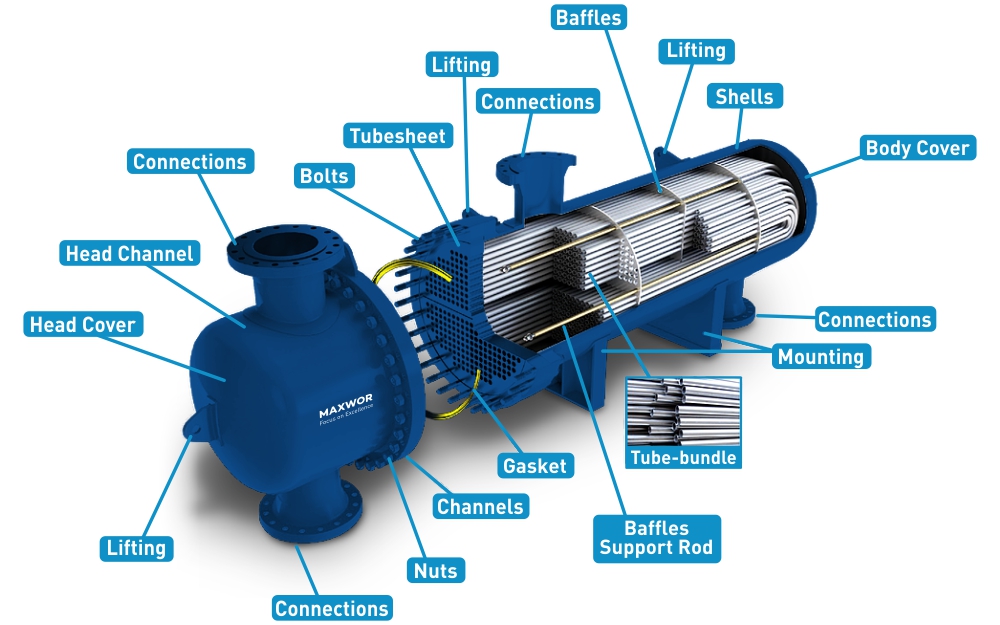
Heat Exchangers in Industry
Technical Data
- Design Pressure: up to 30 bar (customizable as per requirement)
- Design Temperature: -20°C to +400°C
- Heat Transfer Area: 0.5 m² to 1000+ m² (depending on capacity)
- Flow Arrangement: Counter-flow / Parallel-flow / Cross-flow
- Material of Construction (MOC):
Carbon Steel (CS)
Stainless Steel (SS304, SS316, SS316L)
Copper / Brass




